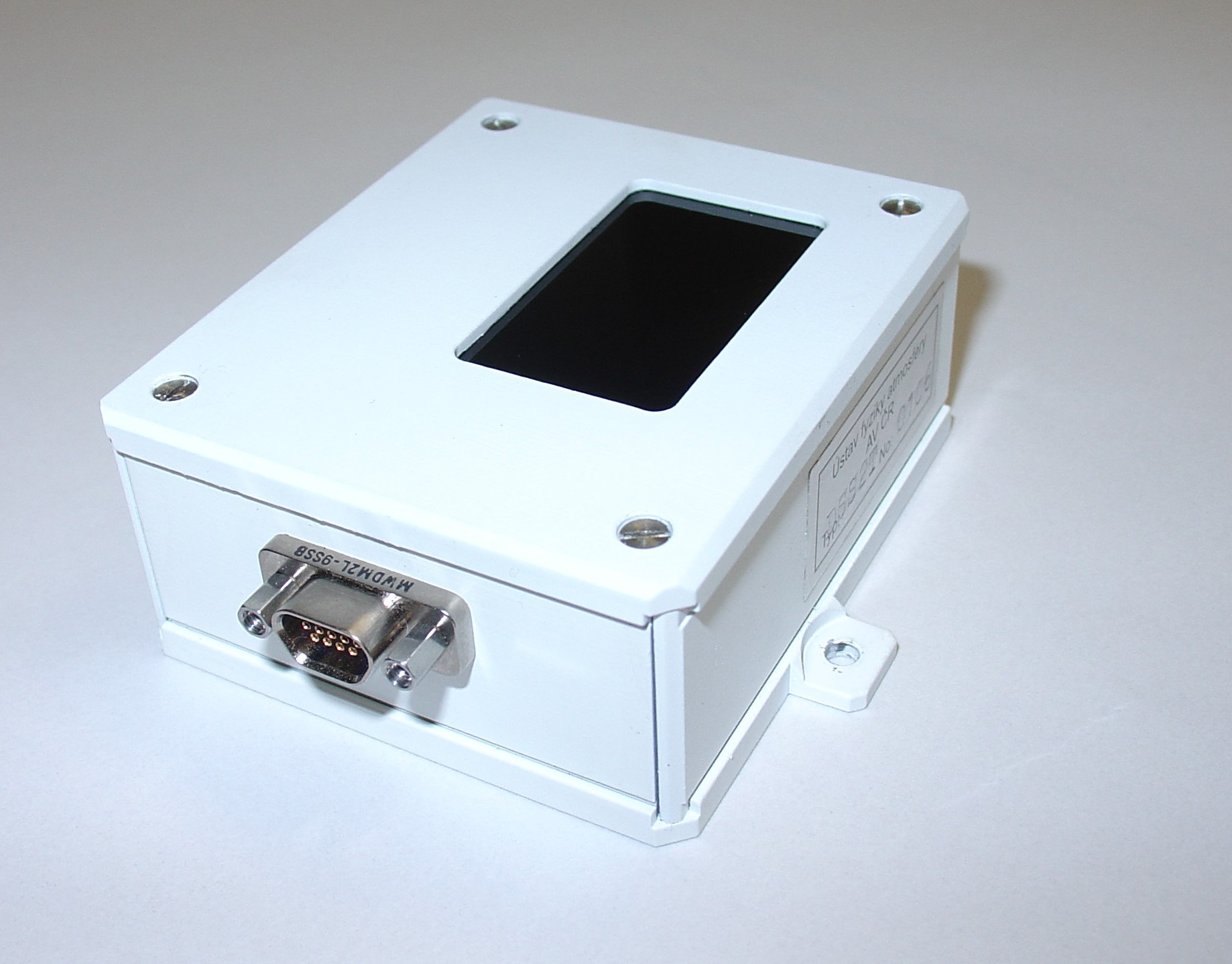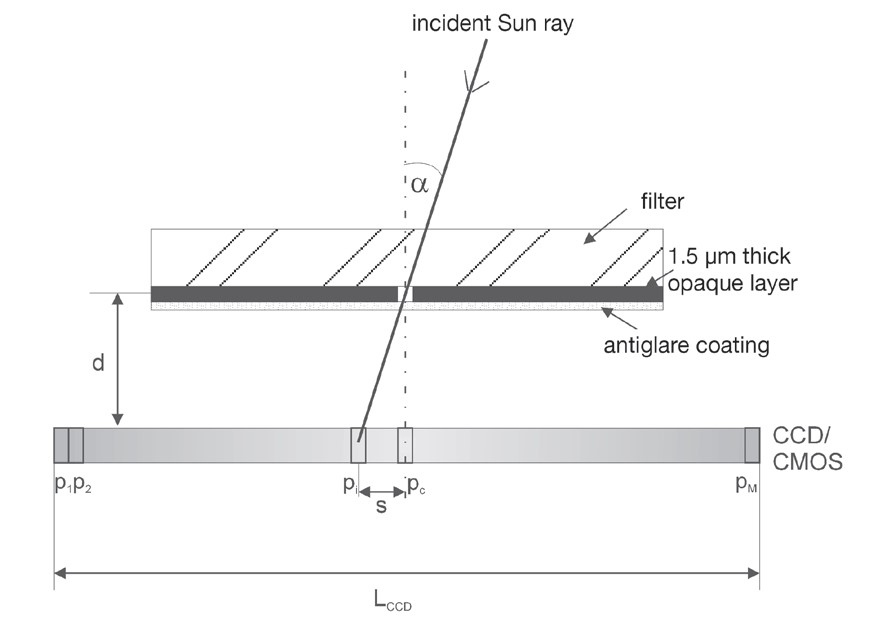The Sun sensors used in the past, e.g. on Magion satellites, were analogue cosine law sensors. These sensors were sensitive to the light reflected from the Earth, which reduced their accuracy. In addition, the measured angle partly depended on the absolute sensitivities of the photosensitive elements that gradually changed owing to background radiation. These disadvantages are overcome by the digital slit sun sensor (DSSS) that measures the position (angles) of the Sun with respect to its axes. Principle of the measurement and the construction of the DSSS is schematically shown in figure. A thin opaque layer with a narrow slit is placed above the CMOS linear image array. The Sun illuminates different pixels in dependence on the angle to the sensor axis. The distance between the linear array and the slit defines the field of view (FOV) of the DSSS. There is a set of two identical mutually perpendicular linear image arrays with two corresponding slits. Thus, two angles between Sun and sensor axis are measured in two perpendicular planes, and the position of the Sun is fully determined.
The FOV of the developed DSSS is usually 80° (±40°) and the accuracy is ~0.1°. If needed, the sensor with narrower FOV and higher accuracy and resolution can be provided. The sensor communicates via RS485/422 interface (optionally RS232). It returns two measured angles and its temperature on request. Optionally, the signal from all pixels can be read. The mass of the sensor is approximately 0.12 kg, its size ~52x52x26 mm.
The sensor mainly consists from COTS and industrial components and is therefore relatively cheap. It was tested on radiation by exposure to 30 MeV protons with the beam flux ~1.5×109 particles per cm2/s for 200 s. No change in function was observed. The sensor has successfully operated on Spektr-R satellite of RadioAstron project, and on Chibis-M satellite.


